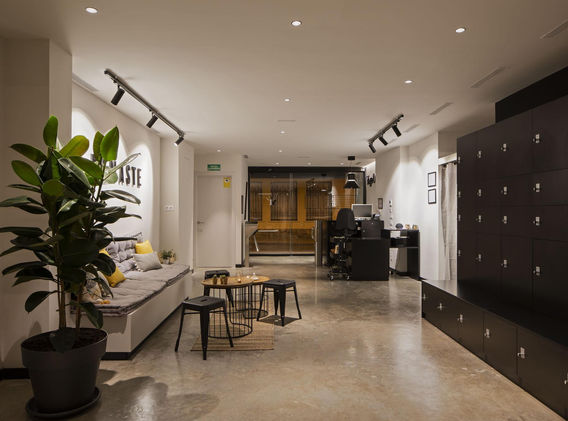top of page

LAMP Project - YogaOne 1

LAMP Project - YogaOne 2

LAMP Project - YogaOne 3

LAMP Project - YogaOne 1
1/3
Yoga One by DIR
Rubi, Spain
Constructor:
VESTA
Lamp Solution:
Stormbell, Hance
Year:
2019
Photography:
Álvaro Valdecantos
Related Products
One of Lamp's latest success case studies in the application of new lighting technologies has been the incorporation of dynamic lighting in a Yoga Centre.
Yoga means 'union' and that is how we have understood the design of lighting, of the space, and of the practice of yoga itself, from an integrating point of view.
In this case, lighting has been designed as a transitional element that guides the user from the bustling and hectic outer world to an inner world that creates an atmosphere favourable to the practice of yoga. A distinctive feature in this project is that all the lighting is connected through a standard communication protocol based on BlueTooth Low Energy, which enables both teachers and administrators to control each point of light in a simple and touch-sensitive way from any mobile device, making it possible to switch the lights on or off, raise or lower levels, select different colour temperatures (2700-6500 K) or select between different types of preset scenes or create their own scenes, even remotely (outside the facilities).
The access to the centre is a first stage in the transition, with slightly higher lighting levels, neutral shades (3000 K) and open optics (58º) providing a degree of consistency in the access and reception counter, where adequate working lighting is kept.
From here, it is possible to access an intermediate space, prior to the Yoga room, where the lockers and a small waiting room are located. In this area, the goal is to create an environment that emotionally prepares the user for the practice and lets them disconnect from their routine while connecting with themselves. For this purpose, the lighting in this environment becomes dimmer and warmer (2700 K) with a strong "scenic" component, using accent lighting with highly concentrated light beams (19º) to achieve this effect, as well as great visual comfort, which keeps the point of light hidden from direct view thanks to its shielding angle.
In these visually connected areas, the number of different luminaires has been reduced to only three families (Moody, Hance, and Stormbell) in order to achieve different lighting effects through the optics and accessories, ensuring the formal simplicity of the proposal, as well as integration with the interior design.
For its part, the Yoga practice room, the main space, is equipped with linear structures that merge into the room ceiling, parallel to the structures where "aerial Yoga" is practised.
Up to 13 types of yoga are practised in this space, each with different energy levels and aims, for this reason it is very important to understand each of the practices, as well as the structure of each of the sessions, to design lighting scenes of each type, with secondary scenes that can be used depending on the time of training: initial warm-up, main training or completion with 'savasana' (relaxation), alternating lighting cycles (levels and shades) and transition speeds, with the guarantee that, as it is a flexible system, scalable and dynamic, both trainers and centre owners can modify these scenes in an easy and intuitive way.
Once the needs of the users of the centre were understood, the following scenes (fixed and dynamic) were designed:
Warm-up: Dynamic scene varying intensity from 25% to 75% and colour temperature from 3000 to 4000 K;
Practice of energetic Yoga: Fixed scene at 75% intensity and 4500 K;
Practice of meditation and restorative Yoga: Fixed scene at 50% intensity and 3000 K;
Relaxation (Savasana): Dynamic scene in which intensity goes from 50% to 15% for 5 minutes, with a CCT variation from 3000 to 2700 K. This 15% in 2700 K scene is maintained for the following 10 minutes.
All the lighting in the centre can be controlled from any mobile device and, in terms of functionality and maintenance; it can even be operated remotely without being inside the installations, as previously mentioned.
This lighting project is an example of how lighting has gone a step further in terms of technology and sustainability. The new challenges being faced by lighting include understanding the needs of users, turning them into simple solutions that transform and enrich their relationship with lighting.
bottom of page






